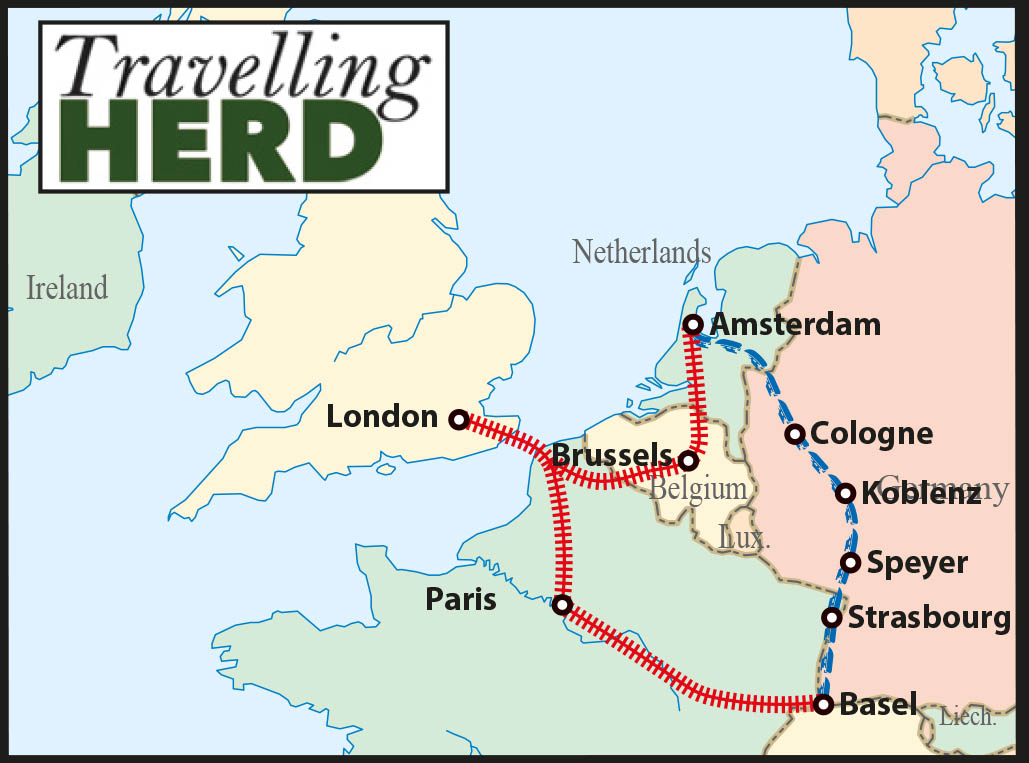Read this blog: The one where we start our Rhine cruise
Sunday 9th to Tuesday 11th July 2023
Earlier in the year Robert planned to accompany his mother on a river cruise along the Rhine in preparation for them taking a much longer trip in 2024. However, in May this year, his mother decided that, due to various health issues she would not be able to travel. So close to the departure date there was no chance of getting a full refund and she kindly thought to give her place to a deserving cause.
Although Matilda felt she could have been a serious contender in this category, she had been allocated tickets in the public ballot for the Men’s Singles Final at Wimbledon. Such an opportunity might never come her way again and it was something she definitely wanted to tick off her bucket list. At the start of the year when she was offered the tickets she had agreed to go with our elder daughter, Ruth, who [unlike Robert] enjoys Pimms, tennis and strawberries and cream and was willing to pay for her own ticket.
With two members of The Herd therefore already committed, the obvious candidate was our younger daughter, Jaime. Fortunately term would already have finished at the school where she works, so she graciously agreed to accompany her father on a free holiday.
The cruise departs from Basel and to get there required catching a very early Eurostar from King’s Cross St Pancras International. Matilda suggested having a meal at the German Gymnasium to wish them a ‘bon voyage’ the evening before.
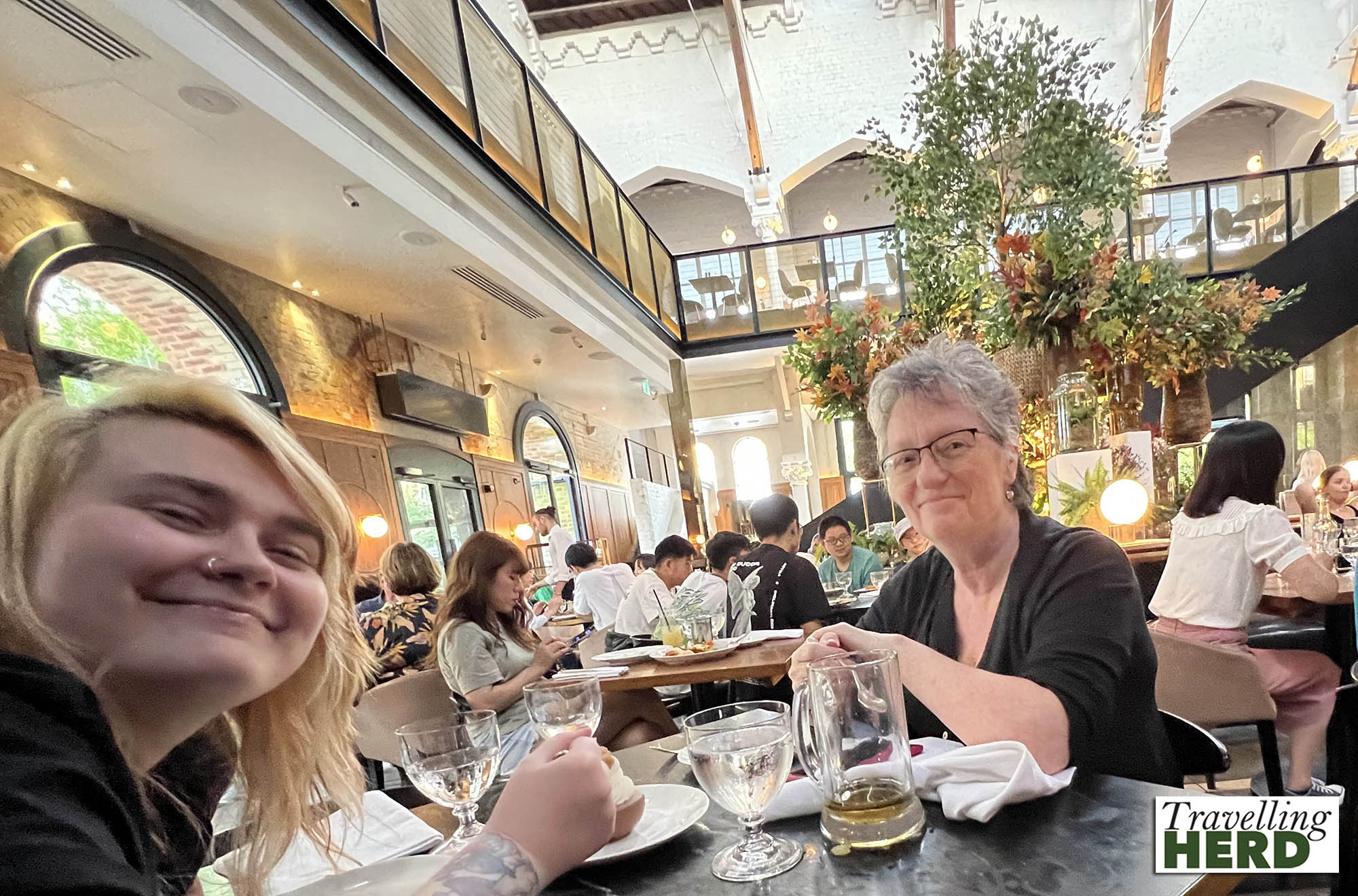
The German Gymnasium was built in 1865 for the German Gymnastics Society. Designed by Edward Gruning as England’s first purpose-built gymnasium it was funded solely by London’s German community which was thriving at the time. The National Olympian Association used it as one of the venues for its first ever Games here in 1866, shortly after the German Gymnasium was opened. Two and a half storeys high, the building features coloured brickwork and cast iron fillets. It is an early example of the use of laminated wood timber to give broad spans: here the roof trusses are 20m and the building is pleasantly light and airy.
The food is obviously German themed with sausages and schnitzel playing a large part although we had checked the menu beforehand and there were also various vegetarian options available. Matilda and Jaime shared a Hazelnut praline comprising ‘caramelised hazelnuts, hazelnut chocolate mousse, toffee sauce, chantilly cream’ and unanimously pronounced this to be the ‘Dish of the day’.
Over the meal, Jaime pointed out that since both she and Robert are dyslexic, Matilda should retain remote overall editorial control and act as chief spell checker. Since Jaime has studied photography, Matilda felt that readers might also expect some more artistic framing and camera angles than usual.
Matilda waved them off to their hotel for an early night before travelling home to enjoy a week of peace and quiet home alone, except for the family pets.
Monday started early. Robert and Jaime had to be at St Pancras at 06:00 to meet our Tour Manager, from Great Rail Journeys. The meet was a quick and simple affair as Robert knew the ropes, so we were able to get to the front of the queue for the Eurostar. The transit through security and passport control was both swift and smooth.
Once in Paris we managed a good crossing from Gare de Nord to Gare de Lyon, which enabled us to have a brief visit to one of Robert’s regular cafés in front of the station.
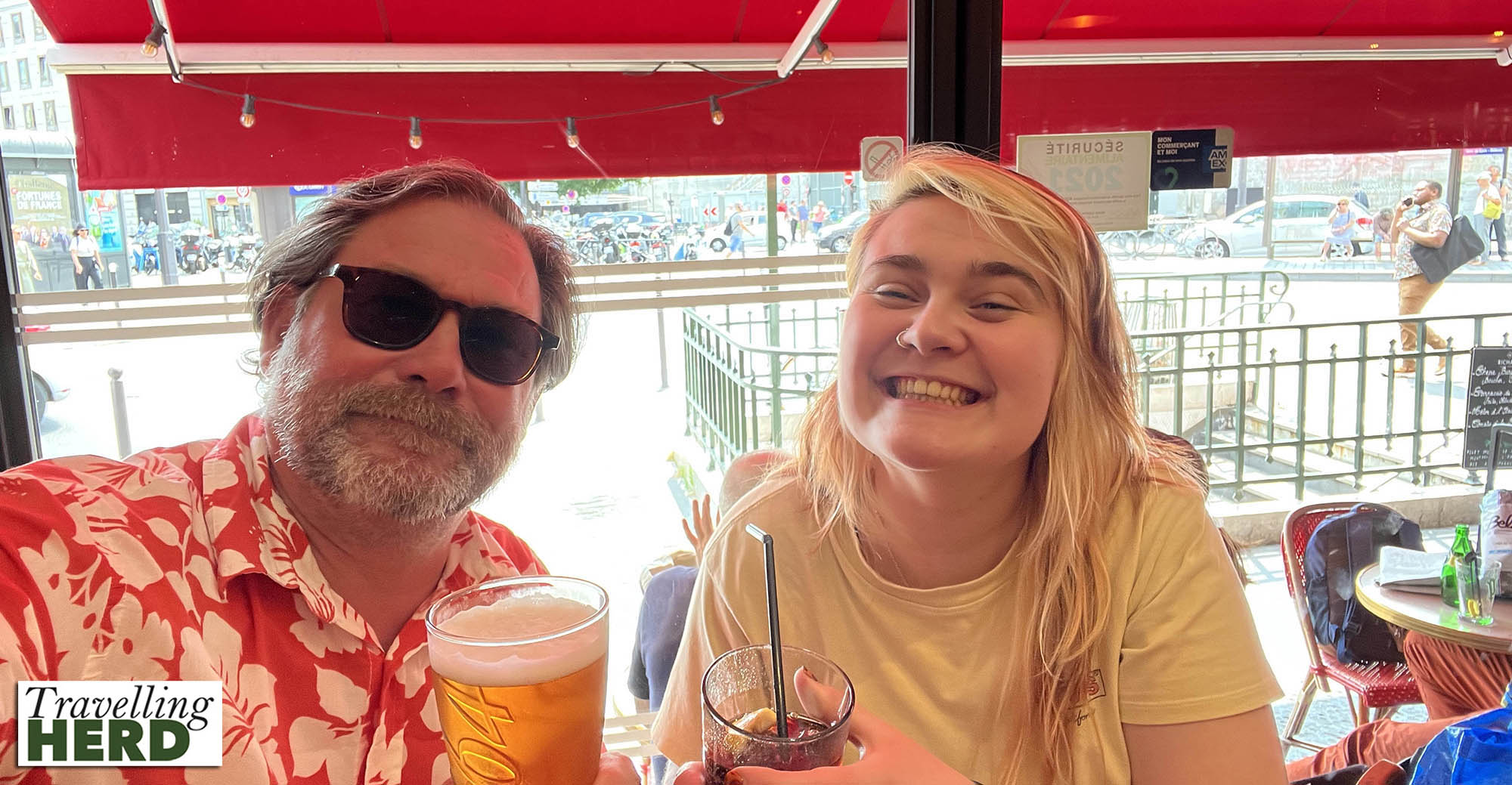
From Paris to Basel, which is on the French/Swiss/German border it is only a two and a half hour journey by train. The early morning and the rhythmic motion of the TGV took a toll on Robert and, rarely for him, he had a nap, which Jaime took great delight in documenting for posterity.
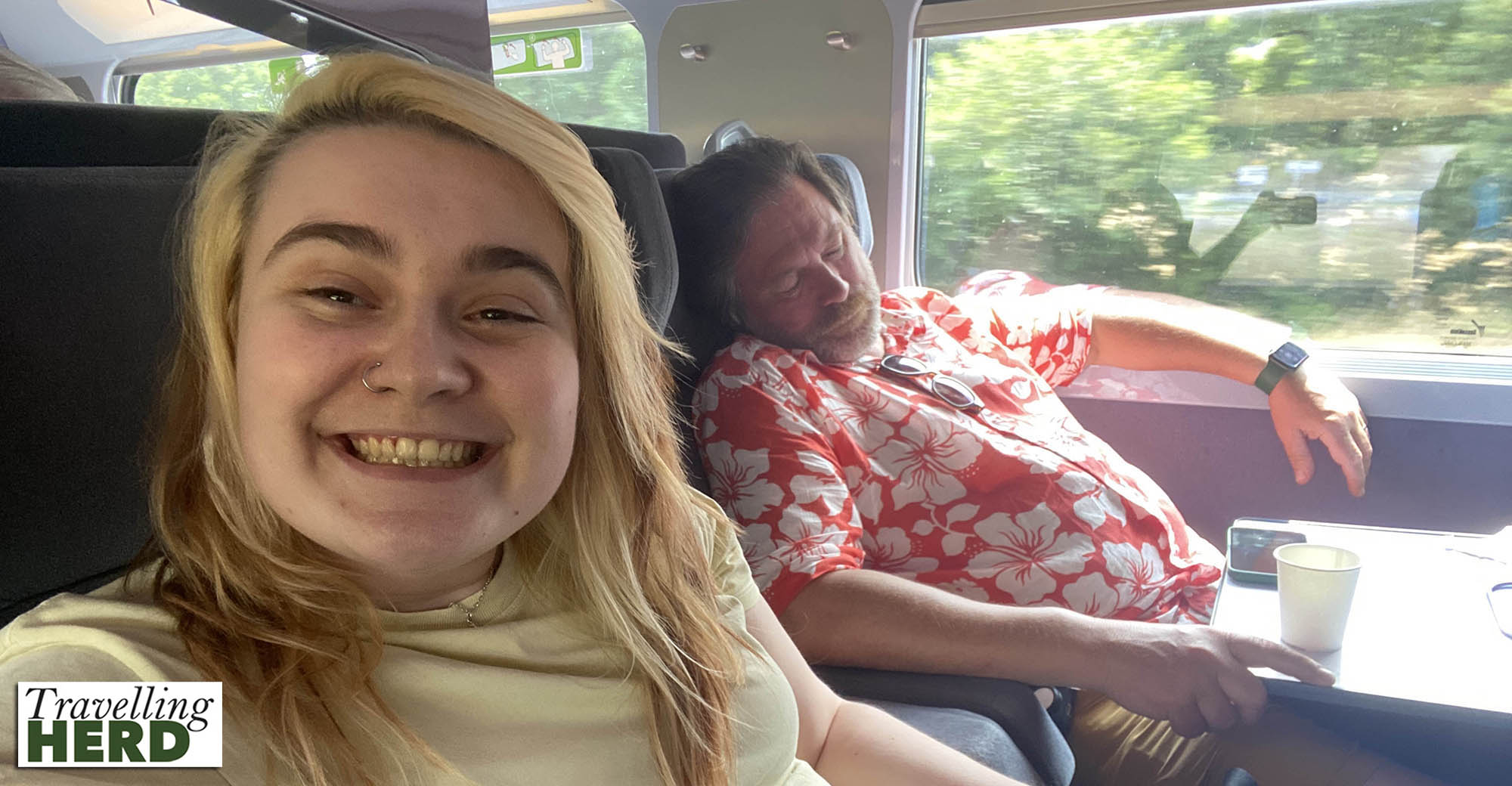
Once in Basel a short coach drive took us to our river cruise ship, the Amadeus Cara.
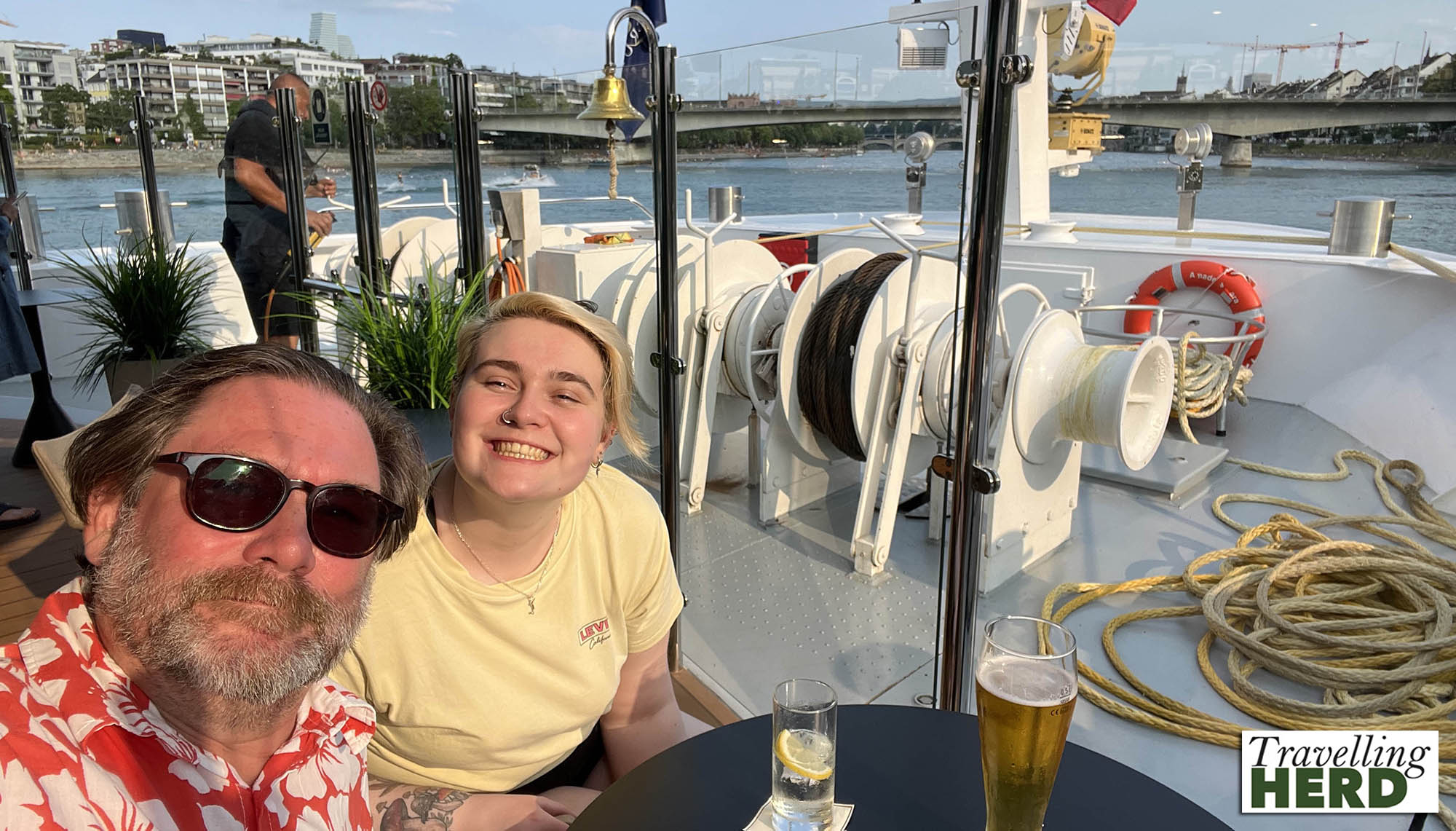
The ship cruised through the night and on Tuesday morning we awoke to find ourselves in the rather industrial area of Strasbourg harbour which is the second largest river harbour in France after Paris.
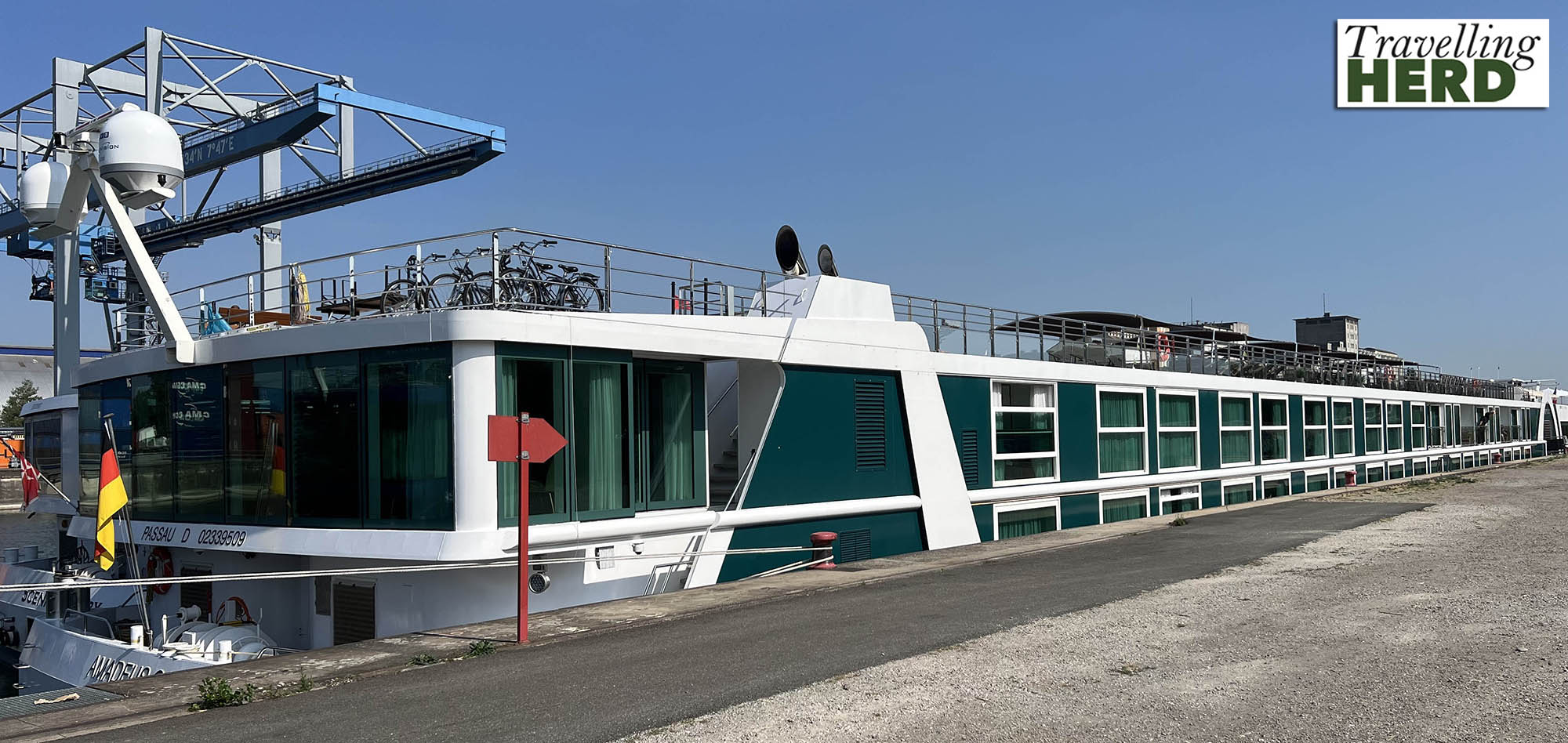
The city of Strasbourg has had a troubled past, changing national allegiance several times. Located in the region of Alsace it was, for many centuries, part of France, but Bismarck annexed it for Germany at the end of the Franco-Prussian war. It remained German until the end of the First World War when the Germans were forced to give it back to France. It remained French until the Blitzkrieg at the beginning of World War II, when Hitler and his Nazi forces invaded France. At the end of the war it was liberated and now remains part of France.
The harbour is on the outskirts of Strasbourg and is in fact closer to the German border and the German city of Kehl. According to the itinerary, the cruise ship coaches would take us to Strasbourg in the afternoon. For the morning the cruise staff suggested that we pop into nearby Kehl, saying that “it was only 15 minutes to walk and cross over the bridge and you would be there”. So that’s what we decided to do.
Forty five minutes later in 30° Celsius heat we arrived in Kehl city centre where Robert made a discovery.
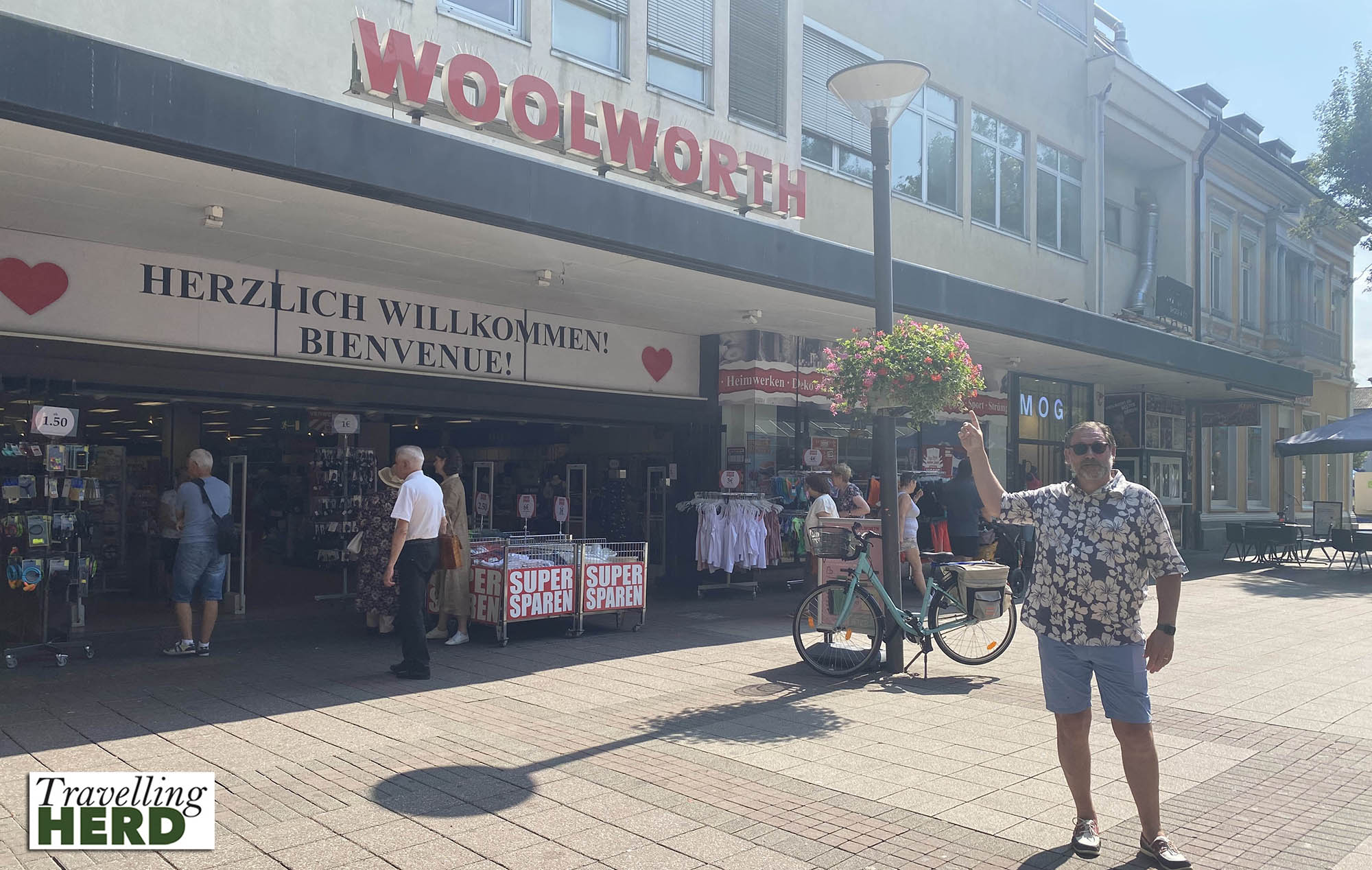
There wasn’t much to the city, it had a nice little high street with a few shops and the market, so after a short stroll we duly turned round and started our journey back to the cruise ship.
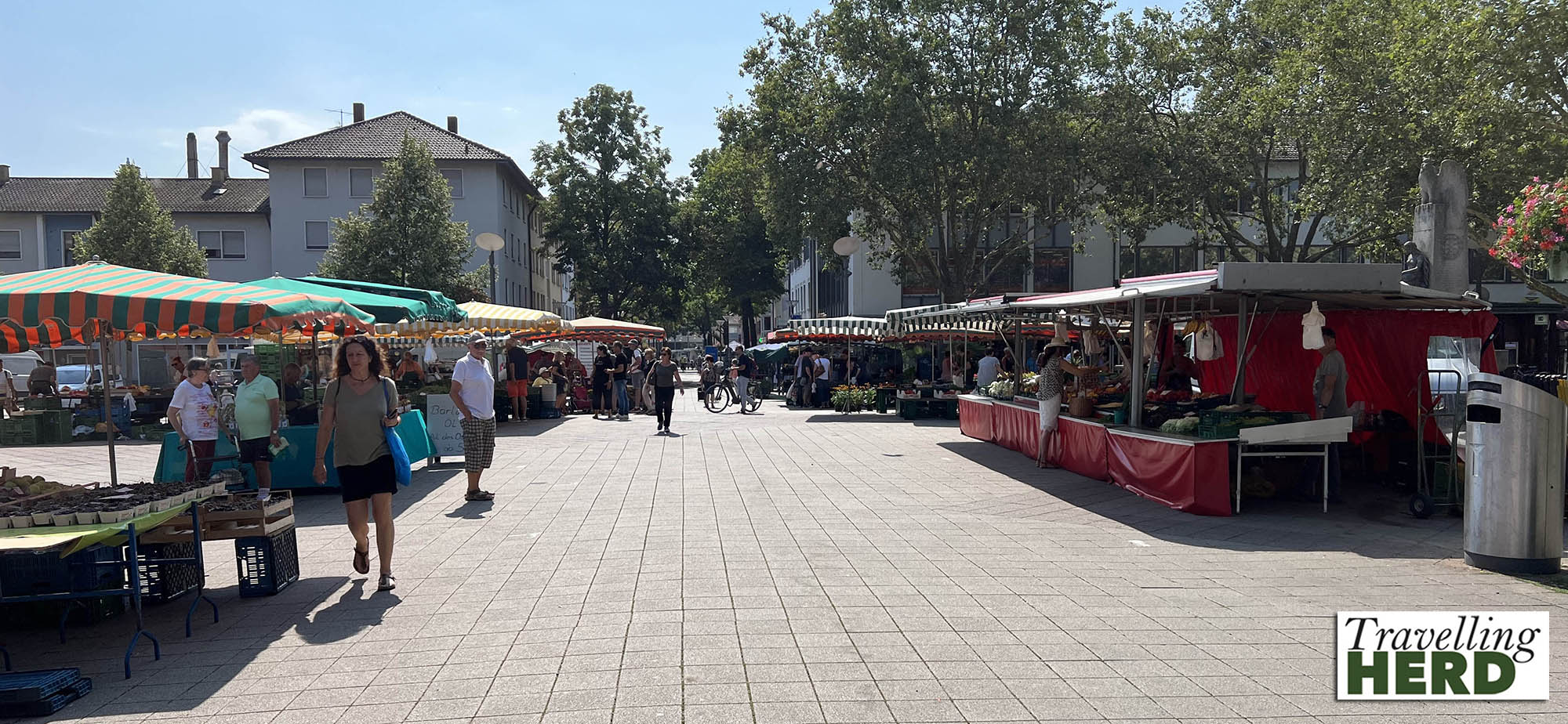
On the walk back we noticed that you could get a tram from here all the way to Strasbourg, and that gave us the idea for our afternoon in Strasbourg. We were supposed to be part of the cruise coach trips with a guided tour. We decided we would take advantage of the coaches to take us into the city, but then using a one day travel pass, make our own way back to the boat later on in the afternoon by tram.
So we had a quick buffet lunch on board and at the allotted time of 14:00, we got on the coach into Strasbourg. This was very convenient and took 30 minutes with an interesting onboard commentary. We went past the Orangery and spotted the storks nesting in the residential streets. When were dropped off at Place de la Républque and we decided that we would walk back to take some photographs of the storks.
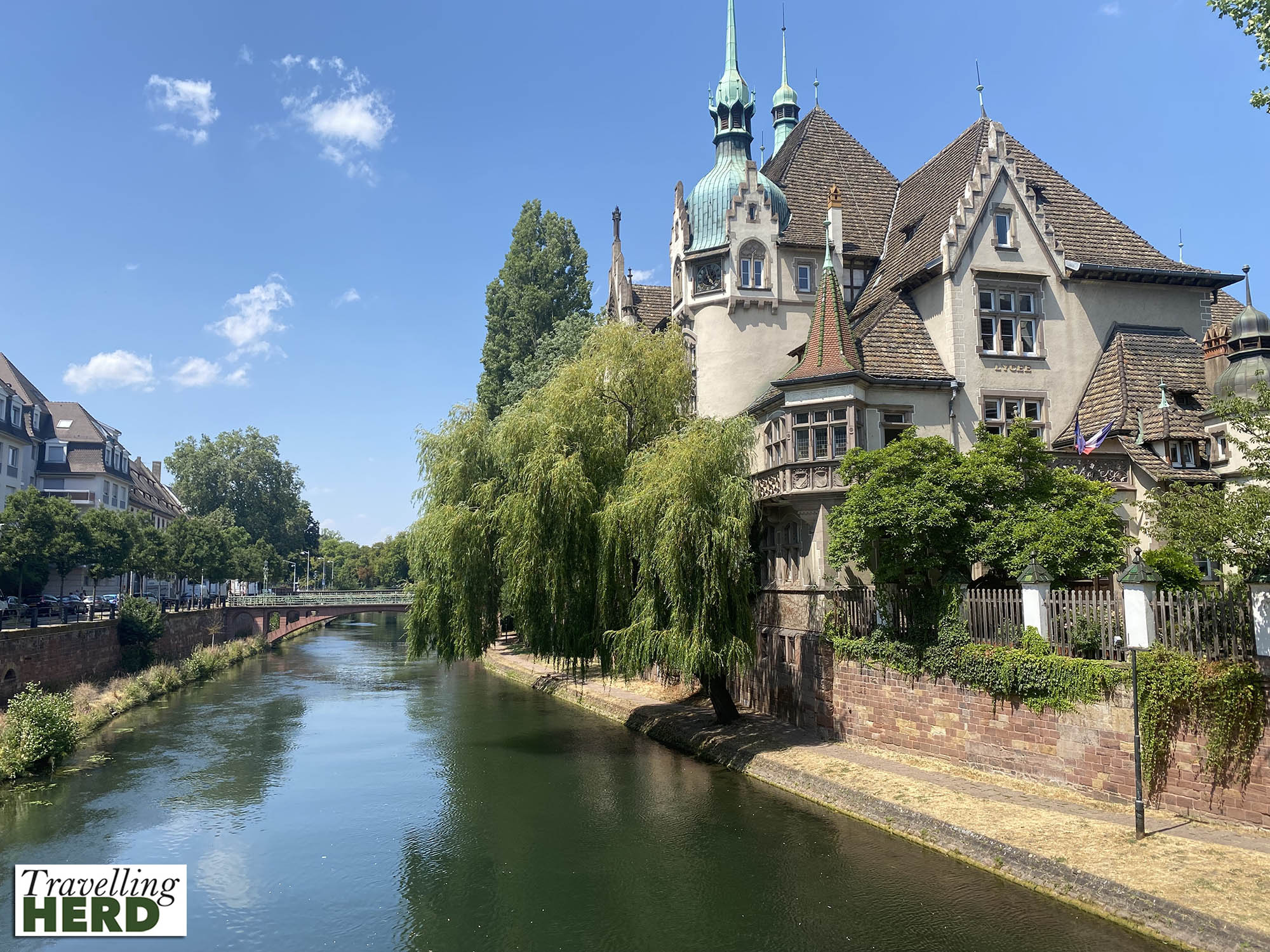
Unfortunately this ended up as a half an hour walk which Jaime thought was a route-march and in the 34°C heat with a blister on her foot, she began to struggle, but we did manage to get some good photographs of the nesting storks.
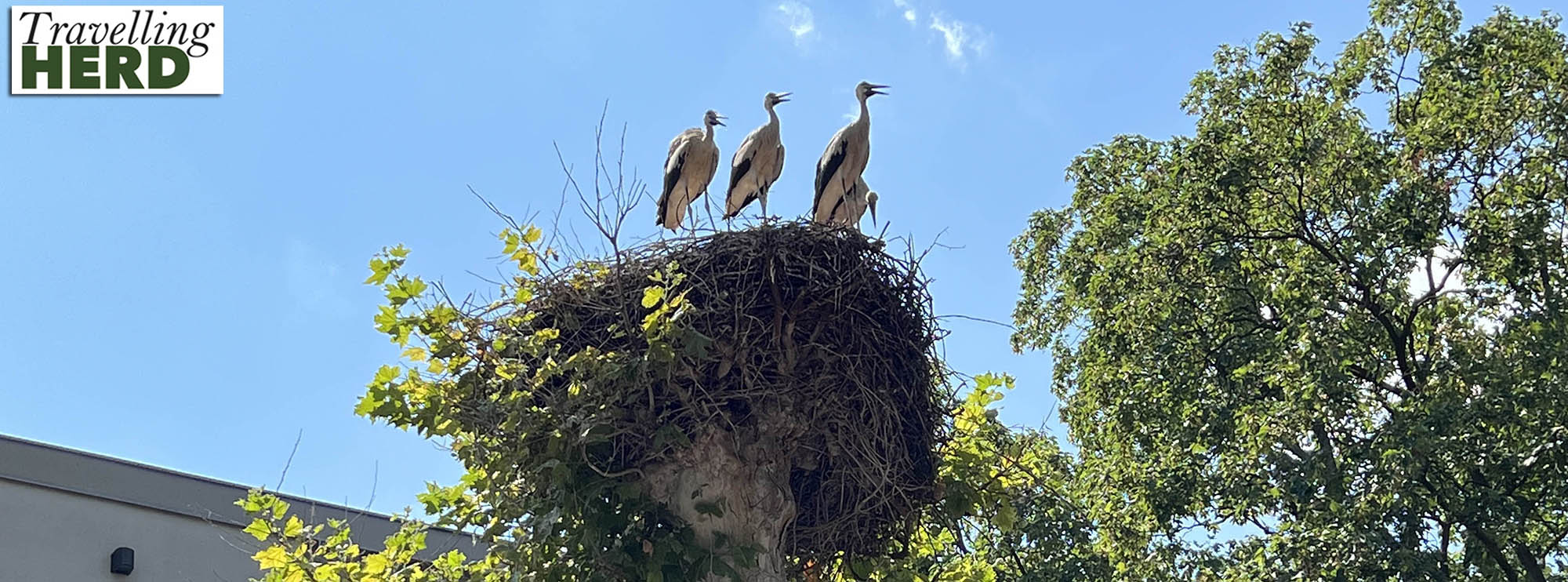
The stork, cigognes blanche, is the symbol of Alsace. The birds were recently under threat of extinction until a conservation programme successfully reintroduced a flourishing population.
We managed to get a bus back into the centre of Strasberg and started our city centre walk by buying some blister plasters for Jaime. The chemist didn’t understand our English so with the use of Google translate we were able to convert the English word blister to its French equivalent which interestingly enough is: blister. He then instantly understood!
We visited the cathedral. A earlier building erected in 1015 was destroyed by fire and the existing cathedral was completed in 1439. This is an outstanding piece of gothic architecture.
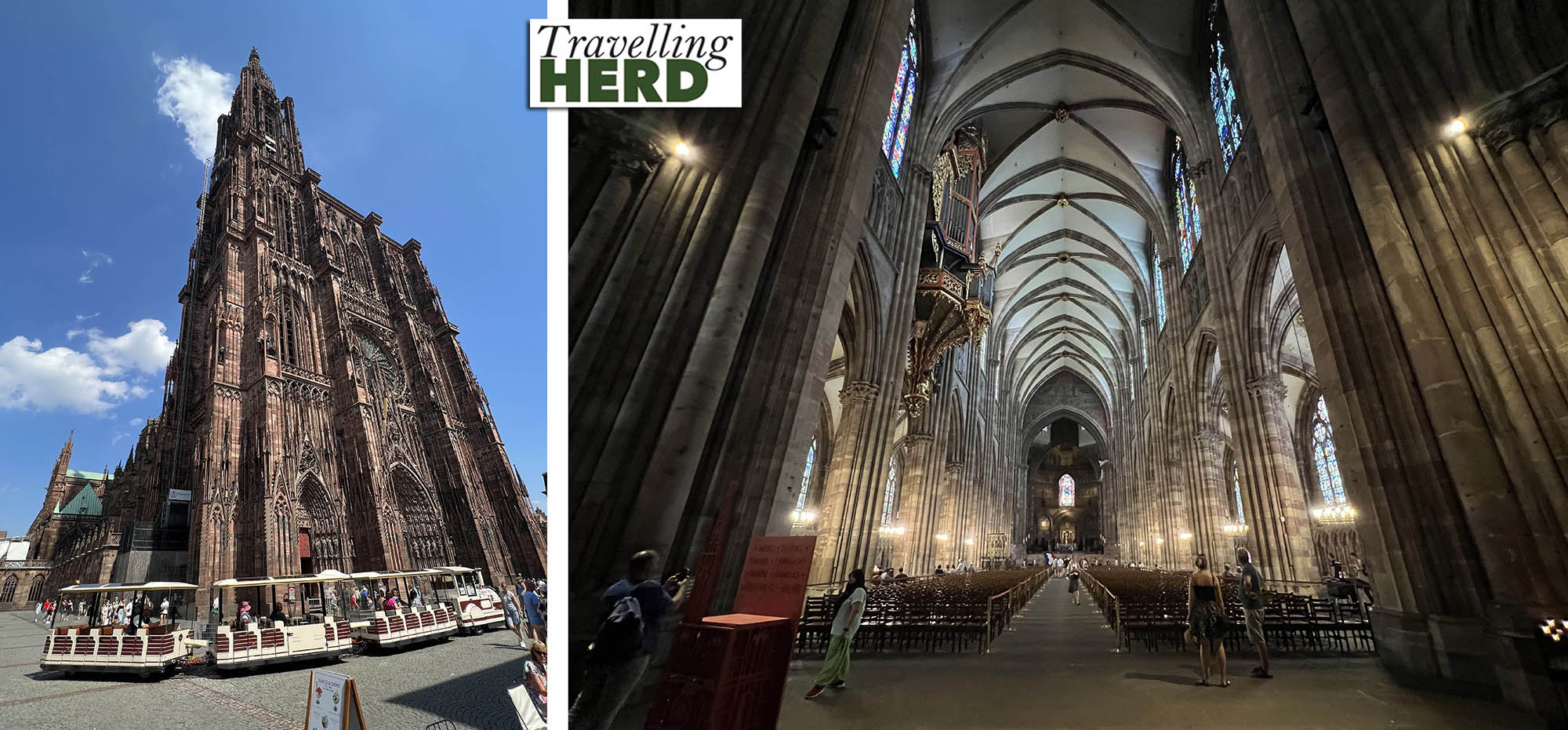
Inside is staggeringly beautiful as well, particularly some of the stained glass windows and the fine astronomical clock, dating from 1842.
Between 1647 and 1874 Strasbourg Cathedral was the world’s tallest building. Now it is the sixth tallest church in the world and the highest structure built entirely in the Middle Ages which is still standing.
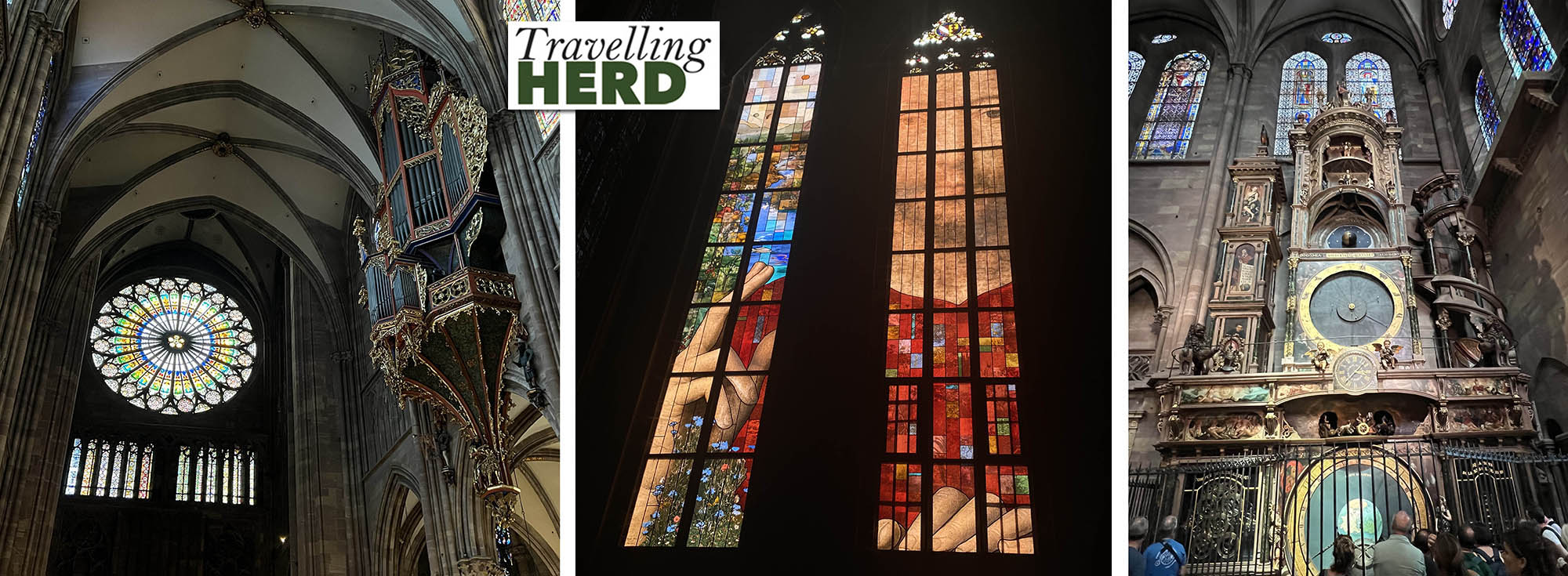
Following on from the cathedral we were in desperate need of rehydration and a respite from the heat. Jaime also needed to apply the recently acquired blister plaster. [Editor’s note: Matilda packs blister plasters on every trip as a vital part of her first aid kit.]

We then decided to walk to Petite France where many of the historic old buildings of Strasbourg are located.
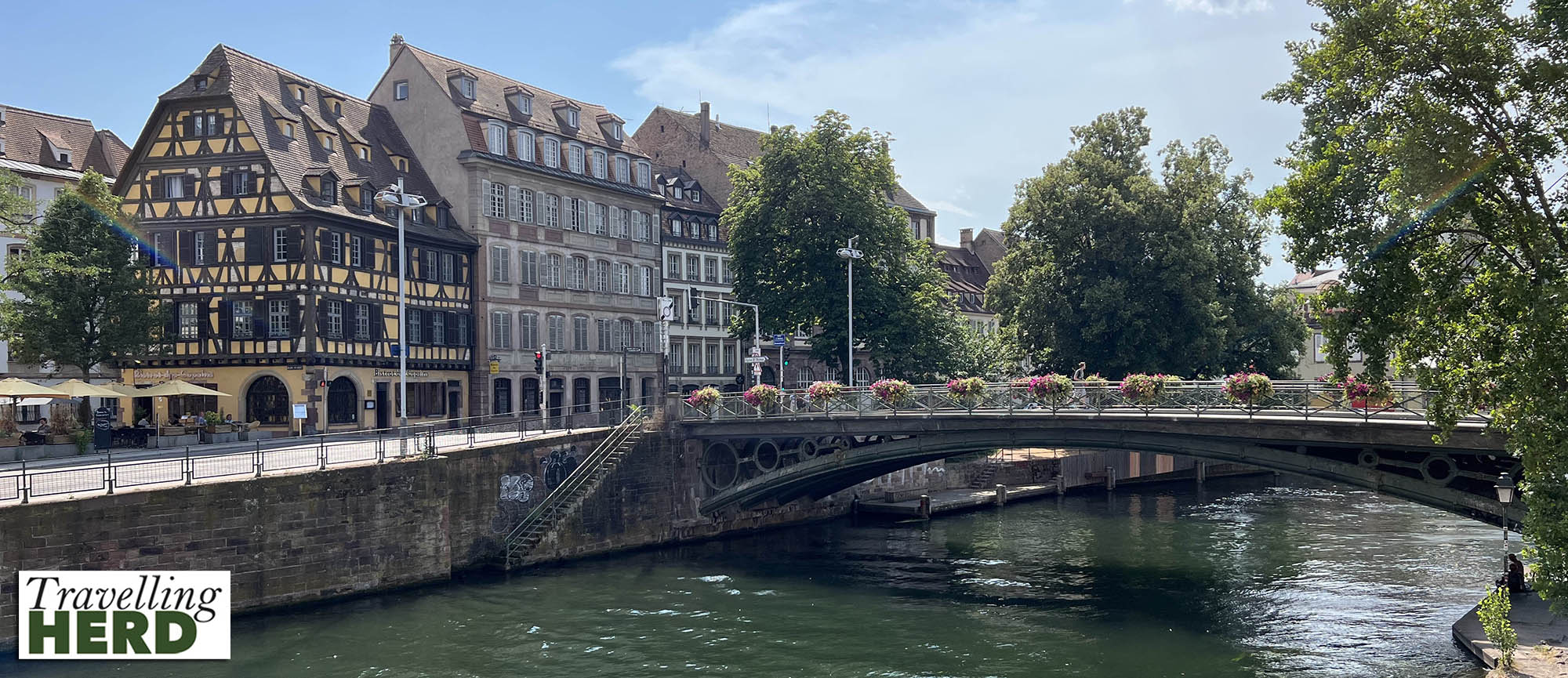
The name Petite France (“Little France”) was not derived from patriotic or architectural reasons but was originally intended as more of an insult. A hospice was moved to this area in 1687. It had originally been founded in 1503 by Gaspard Hofmeister, a citizen of the city, for Charles VIII of France who suffered from syphilis. Syphilis is a disease that appeared suddenly in Europe at the end of the 15th century and soon spread so that those infected were isolated and required much nursing care. Syphilis was referred to as a “French disease” as it was spread by returning French troops.
In the 18th century the place was called the Hospice of the Incurable. In 1795 the hospice building was referred to as “La Petite France”, and eventually this came to refer to the whole district with its typical half-timbered buildings.
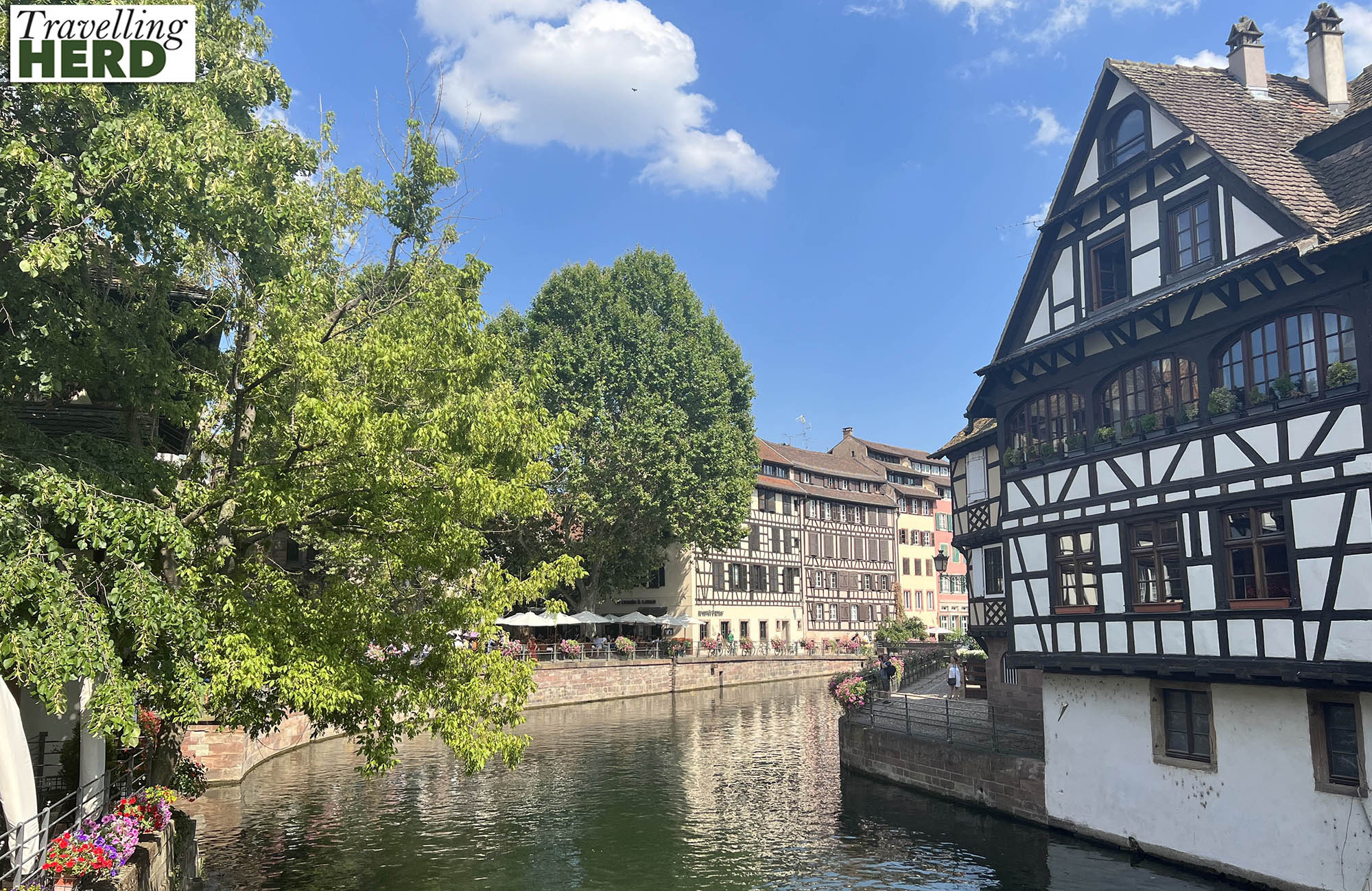
The old town is an island, encircled by the River Ill and man-made canals: indeed some people call the area ‘little Venice’ because of the number of canals.
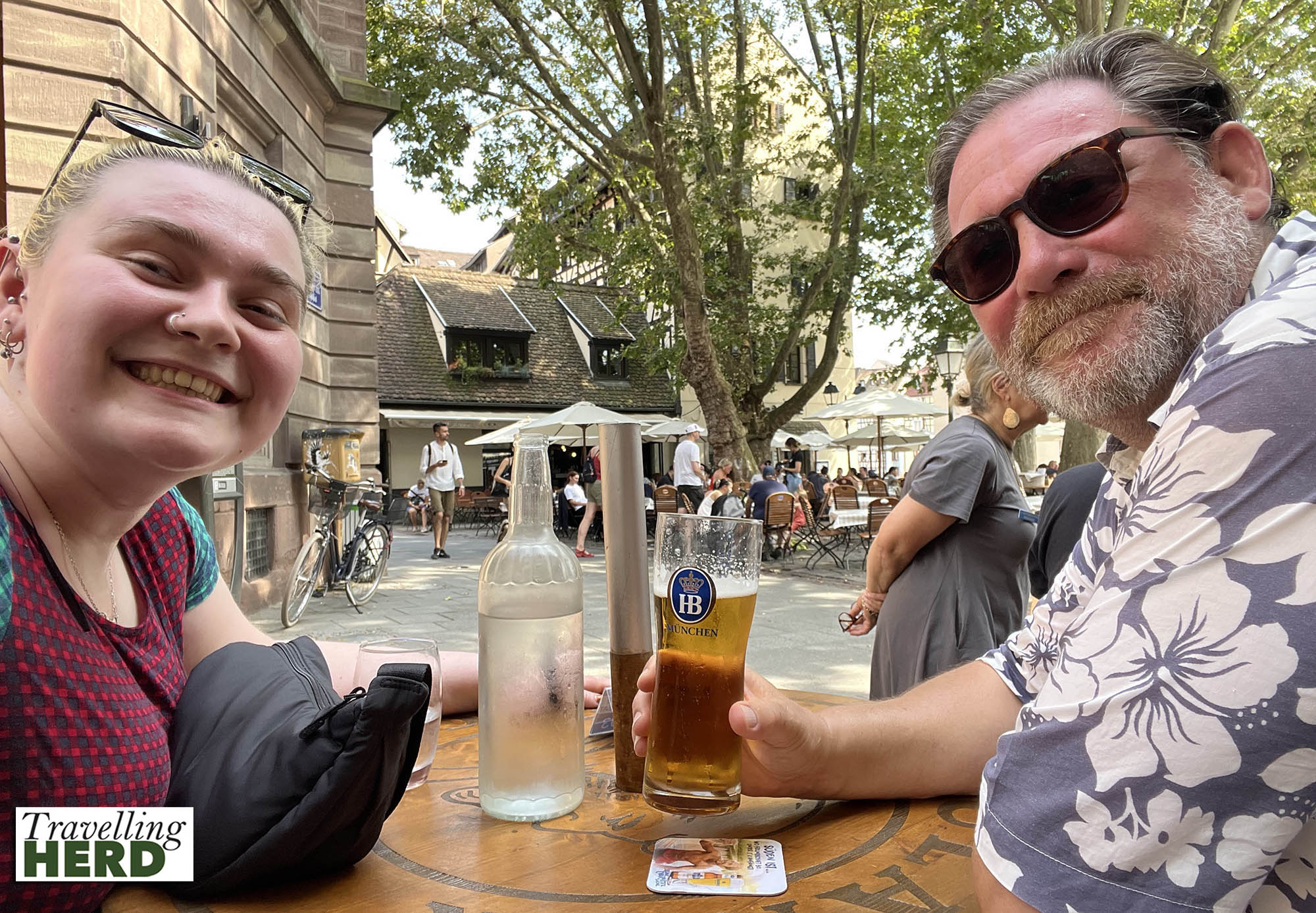
Having rehydrated and administered the appropriate first aid, we were able to continue on our way, refreshed, and catch our tram back to the cruise ship for the next leg of the journey.
Video of the day:
Selfie of the day:
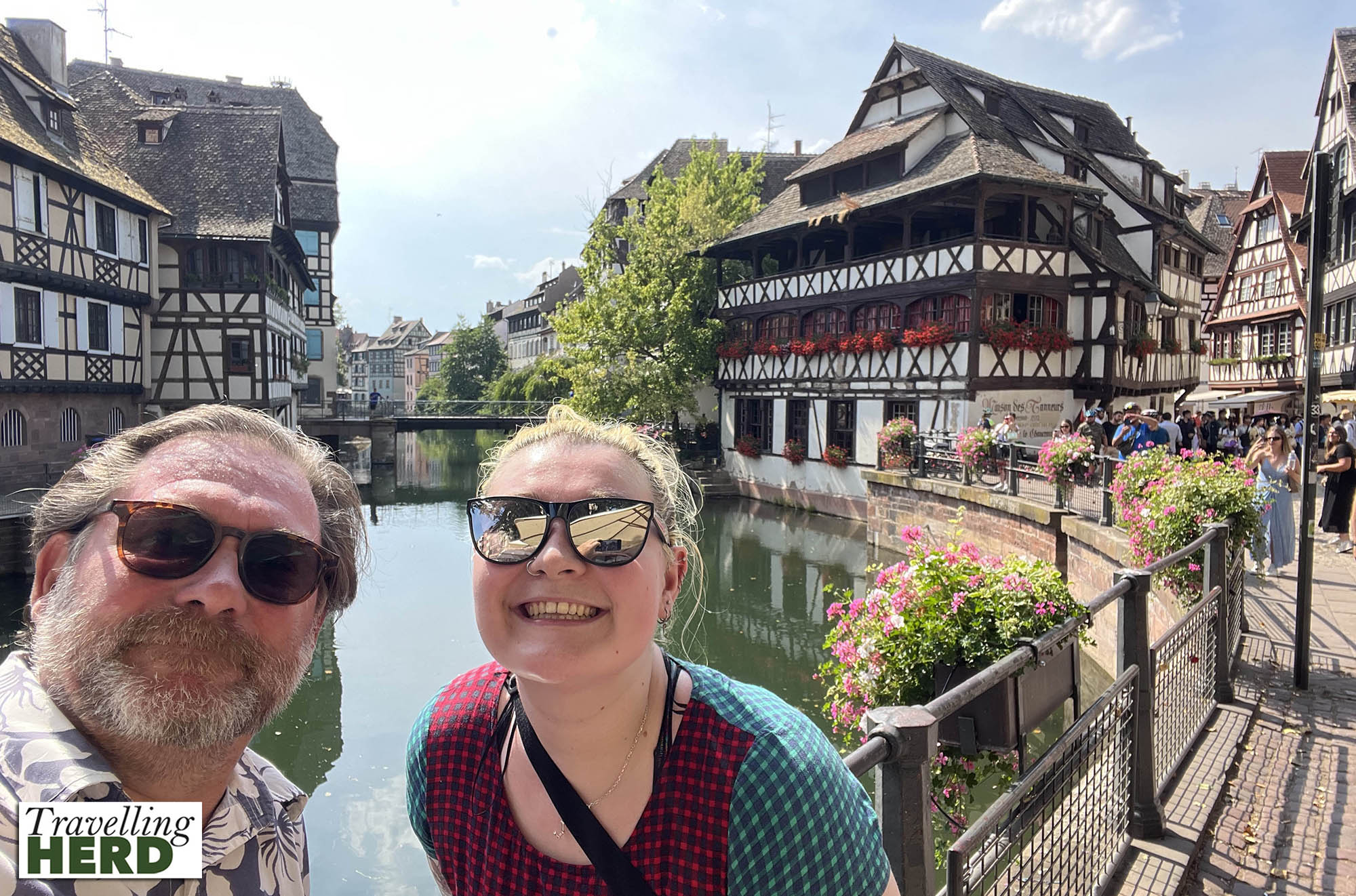
Dish of the day:
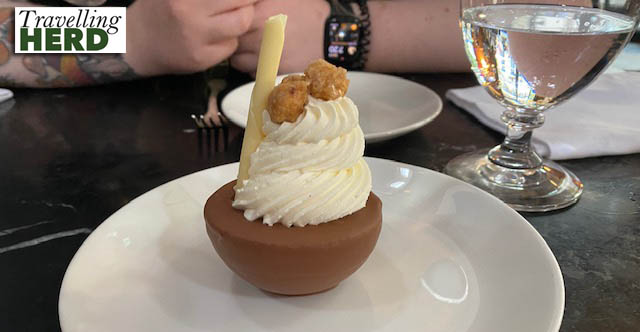
Route Map:
